Zanzibar is home to a wealth of different types of flora. With unique flowers and plants that you can only find in this area of the world, protection efforts are made to ensure that these native species are not picked or put at risk.

Red Mangrove
The red mangrove is a tropical tree with a unique appearance. It has the potential to grow into a large tree and is considered valuable throughout the world. When given the chance to grow freely, it can form massive thickets that become habitats for many species of birds, fish and reptiles. The red mangrove sports reddish roots and pale pink flowers that bloom in the spring. They are not particularly endangered, but when they are cut and transported to different regions they can become an invasive species. Alternatively, clearing red mangrove disrupts fish and other animal species throughout Zanzibar.
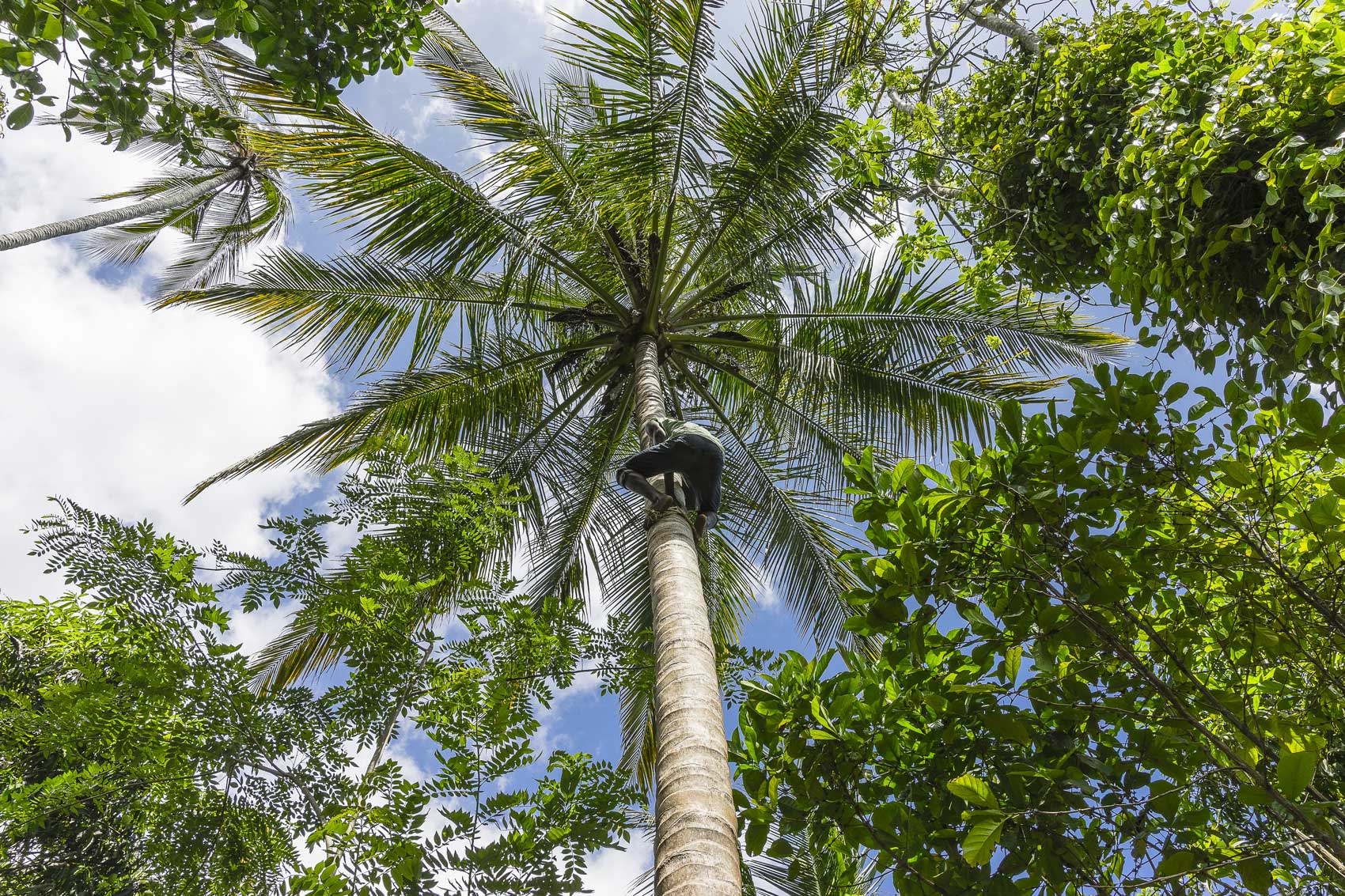
Coconut Palm
Coconut palm trees are mostly known for their tasty seeds. These large and leafy palm trees can grow to 30 meters tall and grow unique leaves from the base of the trunk. Taller Coconut trees can produce up to 75 coconuts each year, but the average coconut palm produces around 30 coconuts a year. Coconuts from a coconut palm weigh around 3.2 pounds and are a delicacy for many animals as well as for people.
The roots of the coconut palm are slightly different from other palm trees as they grow outward from a series of very thin roots near the base of the tree that can spread through the soil. In an older tree it is possible to have up to 3600 roots at the base of the tree. Most roots only grow up to 7 cm/3 inches in diameter.
The oil and milk from coconuts are a commodity, and coconut palms form an important habitat for many types of birds and provide cover from enemies for various mammals. They can be found throughout the coastline and in areas near tidal pools.
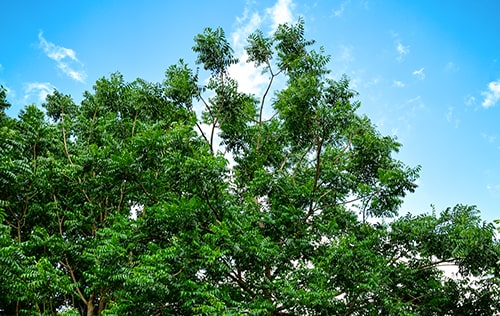
Neem Tree
The fast-growing Neem tree can grow as tall as 70 ft., and while they are evergreens known for growing in tropical climates, long periods of drought can cause the tree to shed almost all of its leaves.
Part of the mahogany family known as Meliaceae, the Neem tree’s fruits are often gathered in order to make neem oil which is often used in organic farming, as well as medicine.
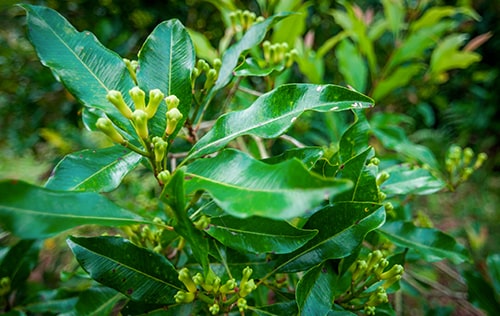
Clove Tree (eugenia aromatica)
The flowers of the clove tree has very aromatic buds, and are used in many, many dishes across many different cultures – from Asian to African, even Middle Eastern.
The clove tree can grow up to 12m tall, and has large, red flower clusters. While this tree blooms the clusters change from a pale hue, turning green, and then finally a bright, brilliant red when they are ready for harvest.
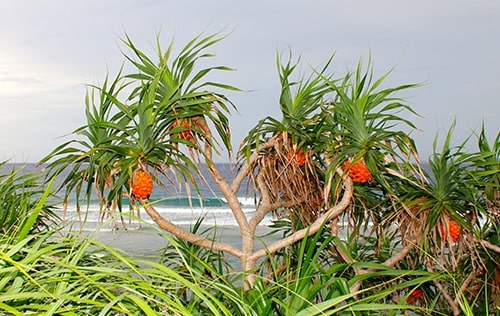
Screw Palm (pandanius kirkii)
While this Australian-native tree is often called Screw Palm, or Screw Pine, it is actually neither a palm, nor a pine. The tree can be found growing in the wild along bodies of water such as coastal fringes, or rivers.
This shrub can grow up to 10 ft. tall and has long, spiny leaves that spiral around the large pineapple-like fruit. This fruit turns a bright orangeish red when it is ripe, and is a favourite of local bird life, and the fruit’s seeds can even be harvested and ground into flour. As well, the spiny leaves of the screw palm are used in construction, as well as in herbal medicine.
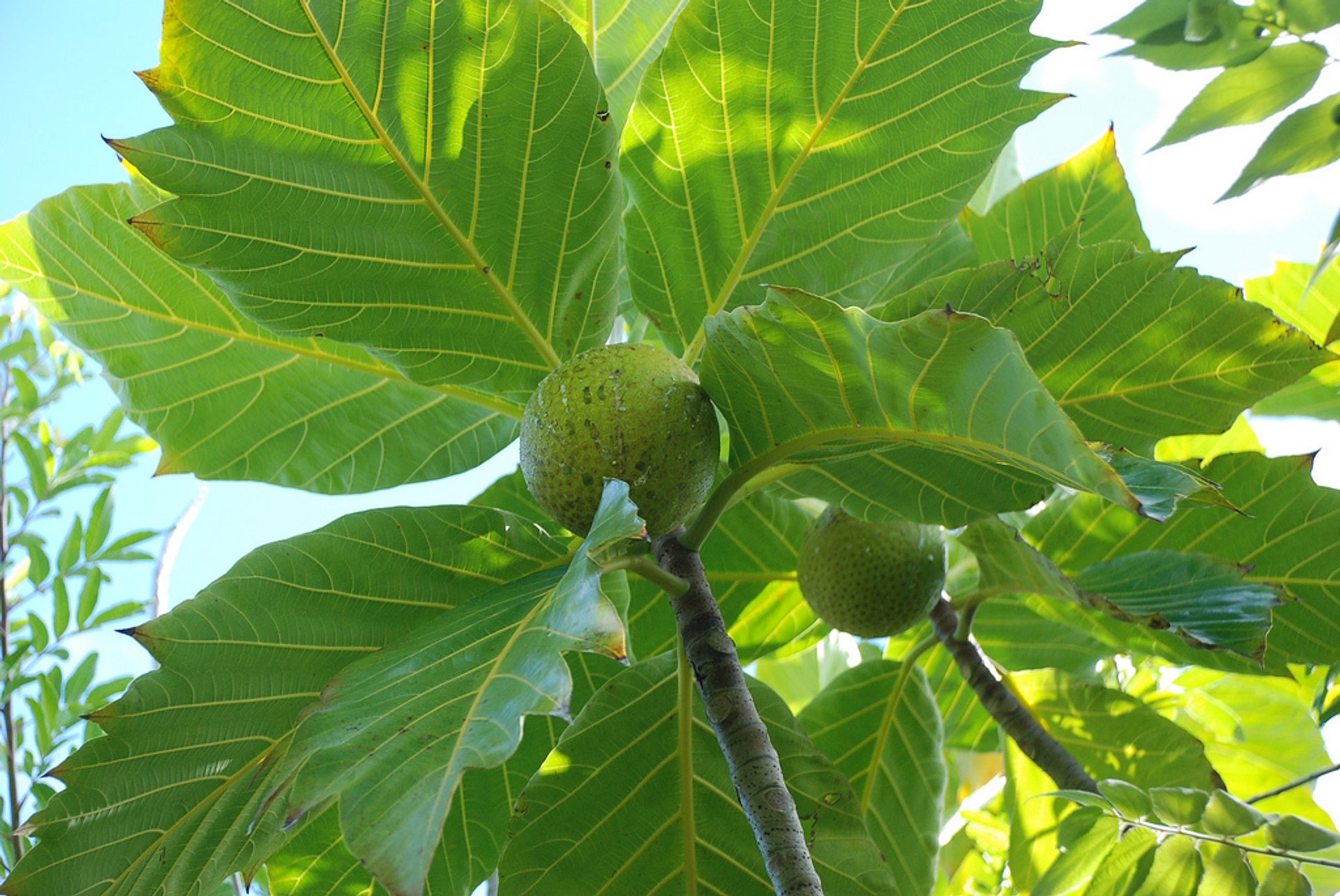
Bread Fruit Tree (artocarpus comunis)
The bread fruit tree is in the mulberry/jackfruit family, and gets its name from the texture of the fruit once it is cooked – the fruit takes on a fresh baked bread-like feel and has a very strong potato flavour.
While the fruit it edible and has become a staple in many cultures, the light (but strong) timber of the bread fruit tree is also used in the creation of boats and even homes throughout a lot of the tropics, and Zanzibar.
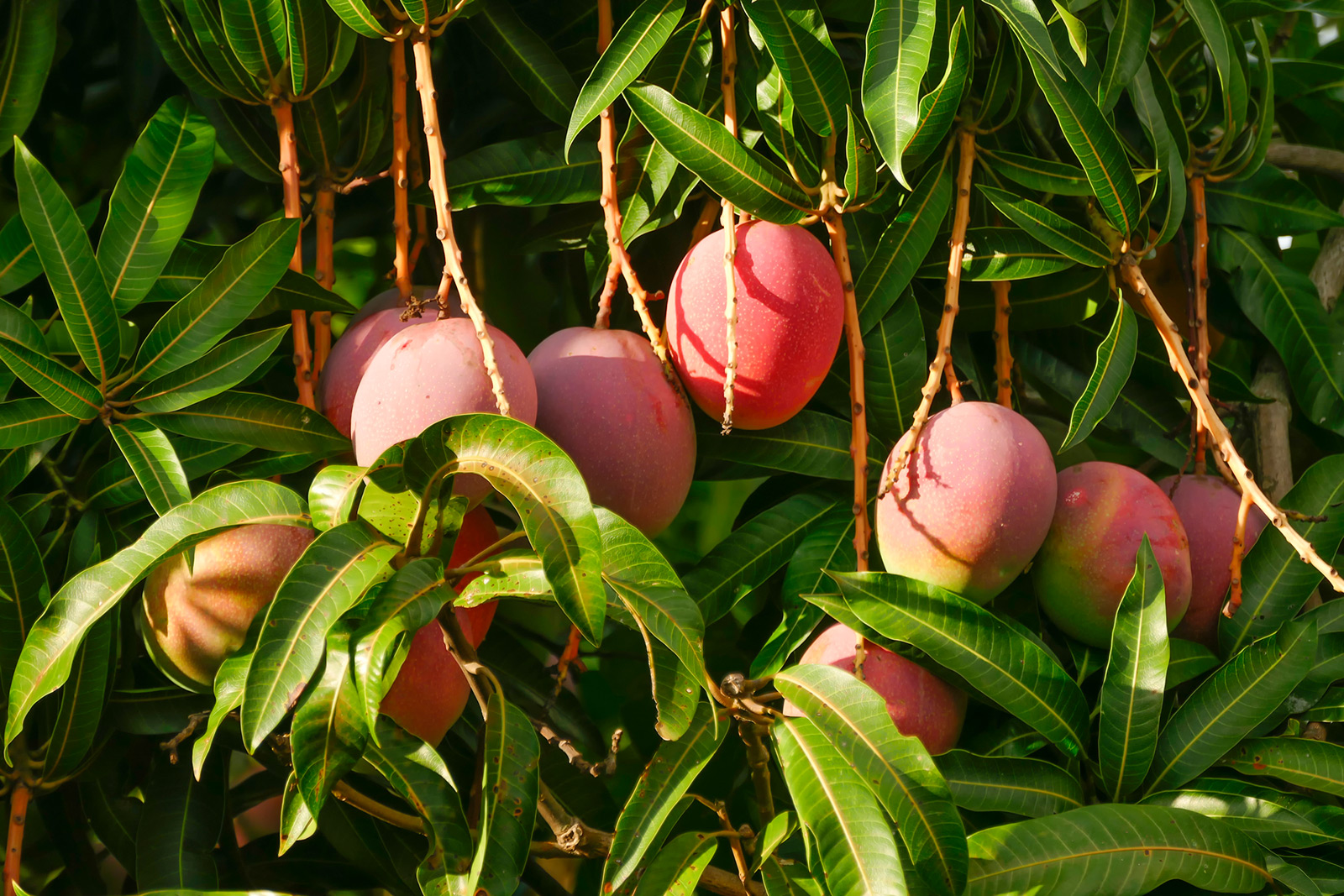
Mango Tree
Known mostly for their juicy edible stone fruit, the mango tree is a tropical tree that actually belongs to the cashew family and can be found in the wild all throughout Zanzibar and other tropical locations.
Part of what makes the mango tree so important in a lot of cultures around the world – including Zanzibar – is the fact that the tree can still produce fruit after nearly 300 years.
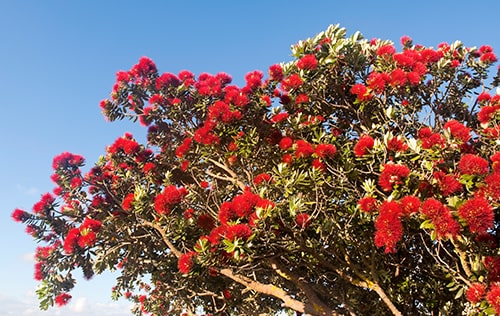
Flamboyant Tree (dalonix regia)
Aptly named, this flowering plant that is part of the Fabaceae bean family is infamous for its fernish leaves that bloom and flower into beautiful, flamboyant displays. Throughout Zanzibar and other tropical locations, the Flamboyant Tree is often used as an ornamental tree.
The flamboyant tree is also sometimes known as the flame tree (because of its rich, bright red leaves,) and it’s flowering season in Zanzibar is between November and February each year.
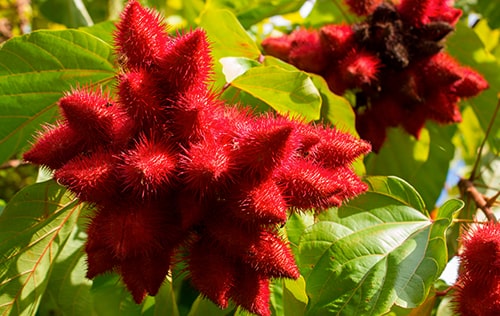
Lipstick Tree
This small tree (sometimes a shrub) gets its cute name because the seeds the tree produces are often used in the creation of red lipstick, as well as spices and body paint.
The natural red condiment the tree produces is called annatto, and it is gathered from the wax that covers the trees seeds. These seeds are used in a lot of traditional dishes all over Zanzibar, as well as the Caribbean.
Zanzibar Palm (chrisalidocarpus pembanus)
Thanks to Zanzibar’s location in the Indian Ocean, it is home to many different palm trees that are dotted all over the region just waiting to be discovered.
Whether you visit one of the many botanical gardens, or come across the palms in the wild, the trees dotted all over the region provide fruit, shade, and – maybe most importantly – breathtaking views.
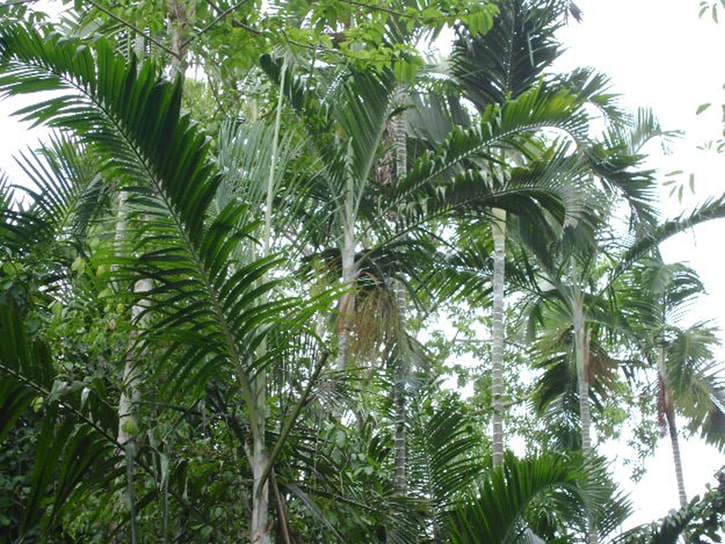
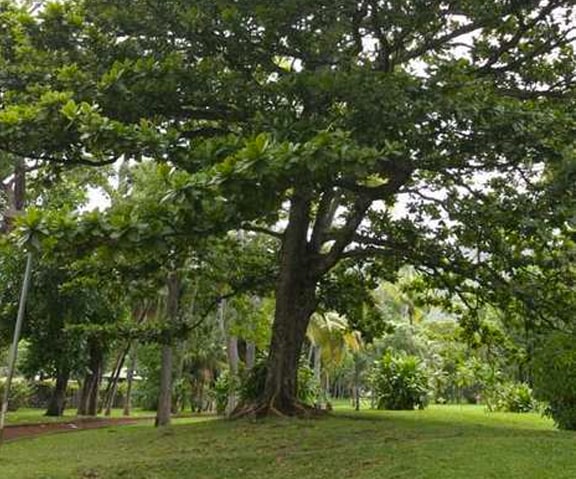
Indian Almond (terminalia catharga)
These large, tropical trees belong to the leadwood family and are found mostly in tropical regions (such as Zanzibar.) The tree can grow to as large as 115 ft., and has a long, upright crown with horizontal branches.
While the fruit of the Indian Almond is light and corky, the seeds within can be eaten when the fruit is ripe – they even taste like almonds.
As the Indian Almond ages, the crown flattens, and the branches form into tiers. While the leaves are normally large and dark green, they can turn pink, even brown, during dry seasons.

